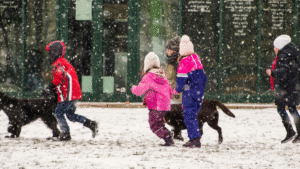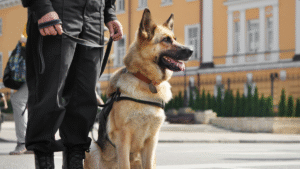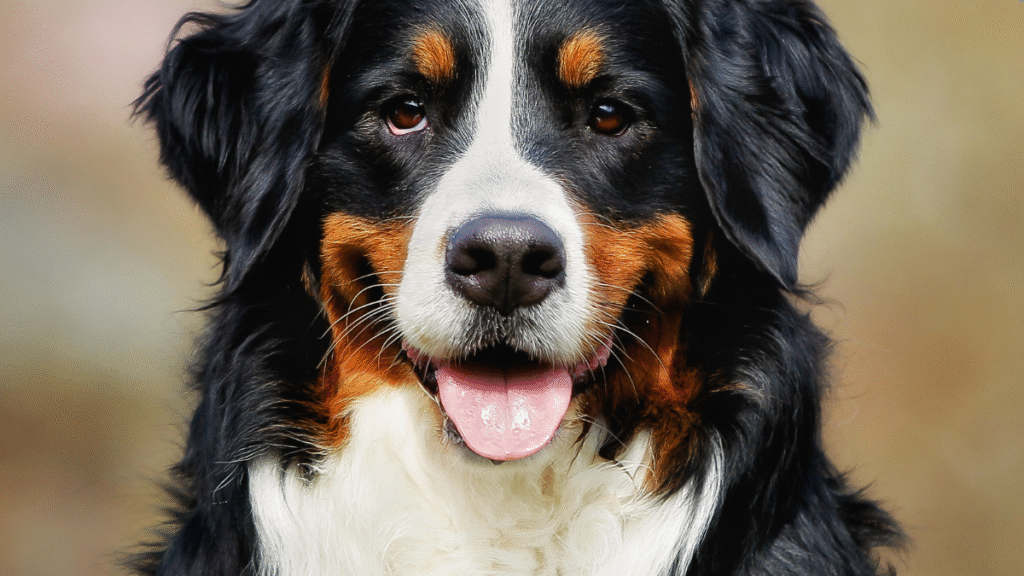As a dog owner, you want your four-legged friend to be happy, healthy, and well-behaved. You take them on walks, play fetch, and maybe teach them a few simple tricks. But when was the last time you challenged your dog’s brain?
Mental stimulation is just as important as physical activity for your canine companion. Playing games and solving problems is a great way to boost your dog’s IQ while having fun together.
In this post, we’ll share five entertaining games you can start today to help build a smarter, calmer, and more confident dog.

1. The Shell Game (or Cup Game): Teach Your Dog Concentration and Patience
Have you ever seen a street magician hide a ball under one of three cups and shuffle them around? Your dog will love this version of the shell game, which teaches concentration and memory skills.
How to Play:
-
Take three identical paper or plastic cups (or small bowls) and two small treats.
-
Allow your dog to watch as you place one treat under one of the cups.
-
Shuffle the cups slowly so your dog can follow.
-
Command your dog to “find it” or “where is it?”
-
When your dog noses or paws the correct cup, lift it to reveal the treat.
-
Reward your dog with the treat and plenty of praise.
As your dog improves, increase the difficulty by moving the cups faster or adding an extra cup.
Why It Works:
This game challenges your dog to use focus, observation, and short-term memory to track the hidden treat. Dogs must be persistent and observant to succeed. The shell game is a simple, free activity you can play anywhere—even indoors on rainy days.
Bonus Tip:
To mix it up, occasionally don’t switch the cups. See if your dog can use memory alone to pick the right one.
2. Hide and Seek: Exercise the Nose and Recall Training
Hide and Seek is one of the best dog enrichment games around. It gets your dog moving, rewards their natural sniffing instincts, and strengthens recall training.
How to Play:
-
Ask your dog to sit and stay, or have someone hold them.
-
Hide somewhere in the house—behind a door, under a blanket, or in another room.
-
Call your dog’s name once and wait for them to find you.
-
When they do, reward them with praise and excitement.
You can also play this game with toys or treats by hiding your dog’s favorite toy and using the “find it” command.
Why It Works:
Dogs love to sniff and track scents. This game activates their powerful sense of smell and strengthens recognition skills for people, places, and toys. It also reinforces recall and obedience, as your dog must wait patiently for you to hide before searching.
Bonus Tip:
Increase the challenge by hiding in more difficult spots, reducing the scent trail, or using scent-based toys and puzzles.

3. Food Puzzle Toys: Feed Their Brain While They Eat
Interactive food puzzles are one of the easiest and most effective ways to mentally stimulate your dog every day. These toys require your dog to solve puzzles to access treats or kibble from hidden compartments, rolling balls, or spinning wheels.
Examples of Puzzle Toys:
-
KONG Classic: Stuff it with peanut butter, yogurt, or kibble.
-
Snuffle Mat: Sprinkle food into the fabric folds so your dog must sniff it out.
-
Treat-dispensing ball or cube: As your dog rolls it, treats fall out gradually.
Why It Works:
Food puzzles turn mealtime into a mental workout. Instead of gobbling up food in seconds, your dog must problem-solve and use their nose, paws, and tongue to earn rewards. These games boost intelligence and help relieve boredom and anxiety—especially when your dog is home alone.
Bonus Tip:
Rotate different puzzle toys each week to keep your dog engaged. You can also make DIY puzzle toys using muffin tins, tennis balls, or cardboard boxes.
4. The Toy Name Game: Expand Vocabulary and Memory Skills
Many dogs can learn the names of over 100 toys and remember them! This simple game builds your dog’s vocabulary, memory, and communication skills.
How to Play:
-
Start with one toy. Hold it up and clearly say its name (e.g., “ball”).
-
Encourage your dog to fetch it while repeating the name. Reward them when they bring it back.
-
Once your dog consistently recognizes the toy, introduce a second toy with a different name (e.g., “bear”).
-
Place both toys on the ground and ask, “Where’s the ball?”
-
Reward correct choices with treats or playtime.
Repeat until your dog can identify multiple toys by name.
Why It Works:
The Toy Name Game strengthens memory, auditory recognition, and focus. It also deepens your communication and understanding with your dog.
Bonus Tip:
Keep sessions short—five to ten minutes at most—to avoid frustration. Always end on a positive note with praise or a quick play session.
5. Obstacle Courses and Agility Games: Train the Body and Mind
Agility training isn’t just for show dogs—it’s an excellent way to improve your dog’s coordination, focus, and confidence. You can create a simple course in your backyard or even inside your home.
How to Set It Up:
-
Use chairs, broomsticks, or boxes to make jumps or tunnels.
-
Set up cones, water bottles, or towels for weaving.
-
Instruct your dog to go through, over, or around obstacles using commands like “jump,” “tunnel,” or “weave.”
-
Reward your dog with treats or toys after completing each section correctly.
Why It Works:
Agility exercises combine physical activity with mental engagement. Your dog must listen carefully, make quick decisions, and adapt to changes in the course—all of which boost intelligence and confidence.
Bonus Tip:
As your dog improves, change the layout or add new challenges to keep it fresh. If you want more structure, consider joining a local agility class for guidance and socialization.

Additional Tips for Raising a Smart Dog
Playing these five games will boost your dog’s intelligence, but you can take other steps to make them even smarter. Creating an environment that encourages curiosity and learning is key.
Here are some extra tips:
-
Rotate Toys: Dogs get bored with the same toys. Switch them out weekly to keep things exciting.
-
Teach New Tricks: Introduce new tricks often—simple commands like “spin,” “shake,” or “roll over” help keep their mind active.
-
Socialize Your Dog: Regular exposure to new people, dogs, and places challenges your dog to focus and adapt.
-
Engage the Senses: Encourage your dog to explore new sounds, sights, smells, and textures during walks. Sensory variety provides natural enrichment.
-
Use Positive Reinforcement: Reward curiosity, effort, and learning. Confidence and trust are the foundations of a smart, well-behaved dog.
The Importance of Mental Stimulation in Dogs
Mental enrichment is just as important as physical exercise and socialization for your dog’s overall well-being. Regular brain games:
-
Reduce stress and anxiety
-
Improve problem-solving and memory
-
Strengthen the bond between you and your pet
-
Enhance obedience and focus
-
Encourage calm, balanced behavior at home
Think of these activities as “brain workouts” for your dog. By focusing their energy on positive tasks, you’ll prevent boredom and destructive habits. Aim for at least 15–20 minutes of mental stimulation each day.
Final Thoughts
Engaging your dog’s mind is one of the most rewarding things you can do as a pet parent. The five games we’ve discussed—The Shell Game, Hide and Seek, Puzzle Toys, The Toy Name Game, and Agility Training—offer the perfect balance of fun and learning.
By incorporating mental enrichment into your dog’s daily routine, you’ll nurture a smarter, happier, and more obedient companion. Remember, the key to a truly well-rounded dog isn’t just physical exercise—it’s mental engagement, patience, and playtime that challenges both the body and the brain.
- 5 Cheap Alternatives To Dog Training Equipment - November 12, 2025
- Homemade Calming Spray To Help Dogs During Training - November 12, 2025
- 7 DIY Dog Training Tools You Can Make From Household Items - November 12, 2025
